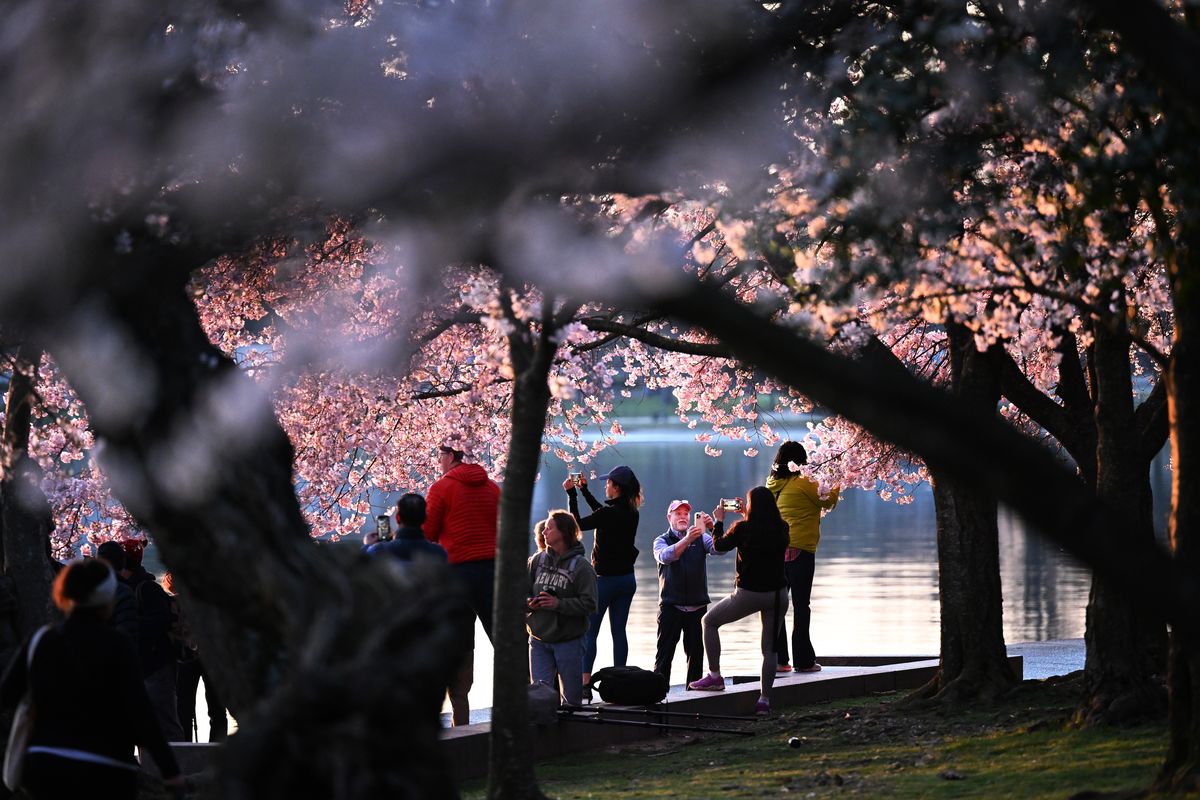Cherry blossoms hit near-record early peak, a sign of climate change

Exceptionally warm March weather propelled cherry blossoms in the nation’s capital to their second-earliest peak bloom in more than a century of records Sunday, reflecting the growing influence of human-caused climate change on the famed trees.
“PEAK BLOOM! PEAK BLOOM! PEAK BLOOM! Did we say PEAK BLOOM?!,” the National Park Service wrote on X at 4 p.m. Sunday. “The blossoms are opening & putting on a splendid spring spectacle.”
Sunday’s peak bloom at the Tidal Basin, about two weeks earlier than normal, tied with 2000 as the second earliest on record; only the March 15, 1990, bloom came sooner in observations that date to 1921. This year’s peak bloom was so early, it preceded the official start of the National Cherry Blossom Festival, which runs from March 20 to April 14, and was also ahead of the earliest projections.
Peak bloom, the last phase of a six-stage bud development cycle, occurs when 70% of the cherry trees are flowering. The buds sped through this cycle in just 15 days, faster than any other year in at least the past two decades.
The early bloom fits right into recent trends.
As March temperatures have climbed over the past century, the average peak bloom date has advanced about six days, from April 4 to March 30. Including this year, each of the past five has seen the peak before March 29. Last year, it was on March 23 – more than a week early.
Temperatures this March have averaged more than 9 degrees above normal, ranking second warmest on record. Freezing temperatures haven’t occurred since Feb. 26.
The mild weather drew thousands to the Tidal Basin on Saturday and Sunday as the blossoms reached peak and temperatures soared into the mid-60s to low 70s, about 10 to 15 degrees above normal.
Groups flocked to catch a glimpse of the beloved tree known as Stumpy before it’s removed as part of a multiyear plan to repair sea walls that have deteriorated since their construction. Some of the sea walls have settled by as much as 5 feet, the National Park Service said, while tidal water levels are increasing because of sea level rise – another indicator of climate change. As Stumpy reached peak bloom for the last time, floodwater surrounded it.
Elsewhere along the basin’s 2.1-mile trail Saturday, a bride and groom posed for photos under a cherry tree in full bloom near the Jefferson Memorial, taking advantage of cloudless skies and a gentle breeze.
Opposite the Jefferson, a crowd assembled for a gender reveal party. Pink glitter exploded under a cluster of cherry trees, presaging a baby girl. The flying glitter looked like cherry blossom petals blowing in the breeze.
Almost every cherry tree at the Tidal Basin attracted people taking selfies and pictures or providing shade for family picnics.
A favorable forecast may allow visitors to enjoy the blossoms for another week or so. Whereas rainy and windy weather can strip the blossom petals and curtail the peak bloom period, this week is predicted to be mostly dry.
Some gusty winds on Tuesday could dislodge petals, but breezes are forecast to ease after that.
The trend toward chillier weather should prolong the bloom period. (Very warm weather tends to shorten it.) As long as there isn’t an unforeseen hard freeze, which would cause petals to wilt, the highs in the 50s and lows in the 30s should help extend the blossoms’ shelf life.